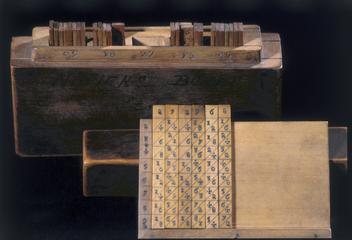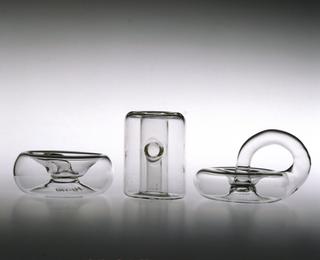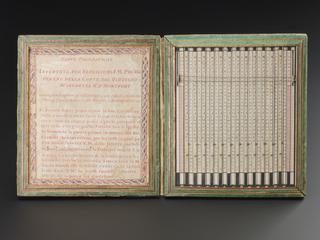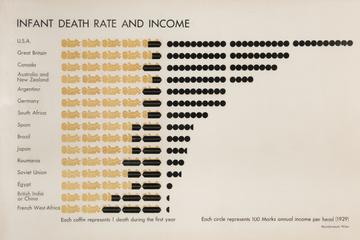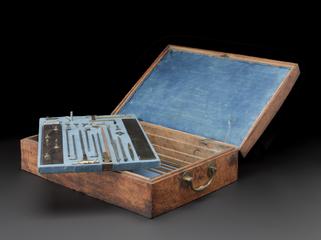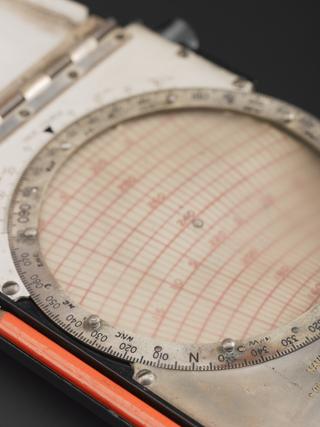
Polyhedron model showing the icosahedron and one of its 58 stellations
- Made:
- 1986-1987 in Nottingham
- maker:
- John L. Hudson








Polyhedron model showing the icosahedron and one of its 58 stellations, by John L. Hudson, Nottingham, England, United Kingdom, 1986-1987
The icosahedron has 20 sides and is one of the five ‘Platonic’ solids. These special polyhedra are made up of regular polygons. All the faces, angles, vertices and edges are the same as each other. There are only five solids with these properties, a fact which was proved in the 13th book of Euclid’s Elements. Plato considered them to be fundamental to the order of the universe: four were linked to the four elements, and the fifth, the dodecahedron, was connected with the heavens.
Details
- Category:
- Mathematics
- Object Number:
- 1987-898/1
- Measurements:
-
overall: 60 mm x 65 mm x 70 mm, .002kg
- type:
- mathematical model and geometrical model
- credit:
- Mr J.L.Hudson
